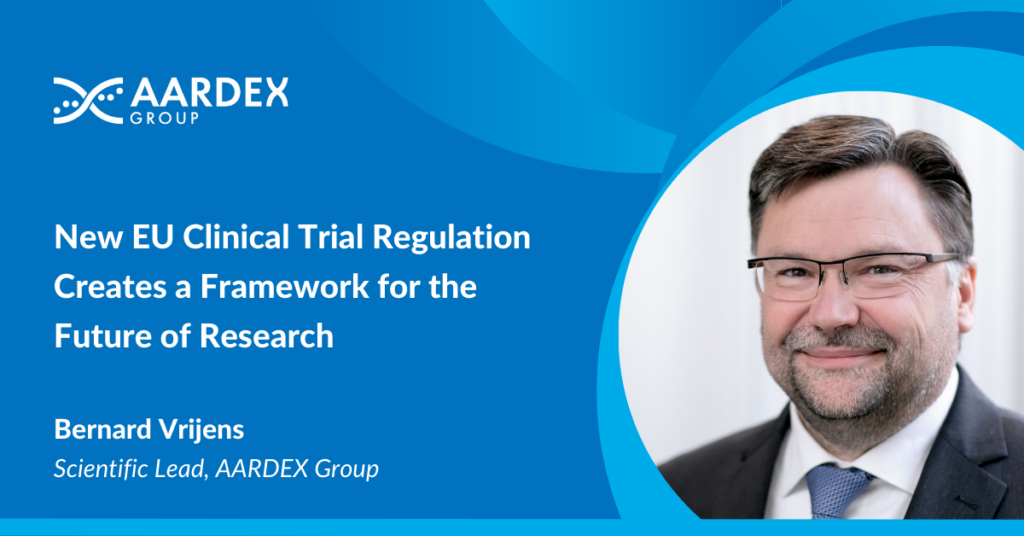Recent advances in medical science are providing new hope for people living with unmet needs – but modern medicines are only one side of the coin. Ensuring new treatments move from bench side to bedside as soon as possible is as much about modernizing clinical trials as it is about compounds and candidates. Embracing new approaches to age-old problems such as recruitment and patient adherence, then, is the key to building 21st-century clinical trials for 21st-century drug products.
Clinical trials have remained the same for decades, but big changes, with the ability to accelerate access to life-changing new medicines, are afoot.
The COVID-19 pandemic brought the benefits of remote, or Decentralized Clinical Trials (DCTs), into sharp focus, and demonstrated just what can be achieved when countries, sectors, and silos work together.
The European Union’s (EU) sweeping new clinical trials regulation, which came into force at the end of January 2022, reflect this brave new world. And the Clinical Trials Information System (CTIS), which harmonizes the assessment and supervision of clinical trials across Europe, is central to this new era.
According to speakers at a Pharma.be roundtable event, held in January to discuss the changes, the CTIS provides sponsors with a single point of entry to the region’s various regulatory authorities. Rather than apply for authorization on a nation-by-nation basis, they said, organizations can instead submit their proposals to the CTIS, thereby simplifying the implementation process.
At the same time, it will provide prospective study participants with a searchable “one-stop-shop”, complete with protocols and contact details, that will grease the wheels of recruitment.
This joint working approach brings together regulatory and ethics authorities from across the EU. It creates a unified strategy that hopes to apply the learnings from developing COVID vaccines and treatments to clinical research in general.
It also facilitates a more patient-centric approach, not only by helping people to find the trials that could help change their lives but also by mandating the publication of lay summaries after study closeout. This move is a long-overdue recognition of the fact that participants are part of the clinical research process and should be treated as such.
Complementing the regulation shift is the Accelerating Clinical Trials in the EU (ACT EU) initiative, which was launched by the European Commission (EC), the Heads of Medicines Agencies (HMA), and the European Medicines Agency (EMA) in January, said Greet Much, Director-General Pre-Authorization at Belgium’s Federal Agency for Medicines and Health Products (FAMHP).
Among ACT EU’s 10 “priority actions” for the next year are enabling innovative trial methods, establishing a multi-stakeholder platform, and supporting the modernization of good clinical practice, she explained.
Uprooting In-built Challenges
Across the new programs, initiatives, and regulations is a single theme – that collaboration is key to accelerating research and that DCTs are the future.
Because when pandemic-imposed infection control measures forced researchers to embrace remote methodologies, it acted as a use case goldmine. It became clear that remote data collection could help overcome many of the in-built challenges of clinical trials.
Recruitment is one such example. Globally, the low accrual rate is the highest rated reason for trial termination in 55% of studies listed as terminated in the Clinical Trials Database.1
This is not a new problem, but as we move from the blockbuster drug to the personalized medicine era, it is becoming more pertinent – recruiting participants who are both eligible and local to a study site has become increasingly challenging. But DCTs can expand the geographical reach of a study, meaning more people who meet the criteria can take part and increase participant diversity.
Remote data collection can also help study teams to tackle poor adherence to protocol medications, a widespread problem that has the potential to which can increase the chances of study failure.
Medication non-adherence is the largest source of variance in drug response during clinical trials. When participants do not take their medication as directed, it can lead to underestimation of drug efficacy, overestimated dosing requirements, and raise safety concerns – and these are among the top reasons for the delay or even denial of regulatory approval.2
Yet it is a very real problem. Studies have shown that each Phase III trial participant is responsible for an average of $42,000 in costs3, yet 30% are non-adherent by day 100.4 Across all clinical trial phases, 50% of participants admit to not following the dosing regimen set out in the protocol.5
Furthermore, it is a problem that many experts only expect to worsen as the DCT model evolves, reducing the number of in-person visits and diluting “white coat adherence”, or improving medicine-taking behavior around clinic visits.
The industry has not, to date, had an effective solution. Traditional methods, such as self-report or pill count, are subjective and open to bias. Digital monitoring, however, provides new opportunities, the Pharma.Be speakers agreed.
By combining connected packaging and powerful data analytics, for example, sponsors and CROs can measure adherence in real-time.
Sensors in smart pill bottles or smart blister packs can capture when a dose is removed from the packet and transmit that information to a cloud-based platform for analysis. Study teams then use the insights to spot erratic dosing patterns and tailor individualized interventions. The model is objective, qualitative, and establishes the human link between site and participant when it is needed.
Building the Framework
As researchers move to keep up with medical innovation, clinical trials are changing at an unprecedented rate. New technologies and methodologies are streamlining and democratizing processes and reshaping and optimizing processes.
There is no standing still, which is why Europe is adapting its regulations to reflect this new reality.
These new frameworks have the potential to make the region a world leader in research and achieve the ultimate objective – translating scientific discoveries into new treatments that tackle unmet medical needs as quickly as possible.
About the Author
Bernard holds a PhD from the Department of Applied Mathematics and Informatics from Ghent University, Belgium. As Scientific Lead at AARDEX ® Group, Bernard oversees the research and development of sophisticated analytical methods for monitoring participant medication-taking behaviours.
Along with providing guidance on adherence to Pharmaceutical, BioPharma, and Academic organizations, Bernard is a founding member of the International Society for Patient Adherence (ESPACOMP) and is an active member of several EU and US-funded consortiums that focus on adherence. Having co-authored several book chapters, over 100 peer-reviewed scientific papers, Bernard is considered an expert in his field.
References:
- Desai, M. (2020). Recruitment and retention of participants in clinical studies: Critical issues and challenges. Perspectives in Clinical Research, 11(2), 51. https://www.ncbi.nlm.nih.gov/pmc/articles/PMC7342339/
- Fogel, D. B. (2018). Factors associated with clinical trials that fail and opportunities for improving the likelihood of success: a review. Contemporary clinical trials communications, 11, 156-164. https://www.sciencedirect.com/science/article/pii/S2451865418300693
- Wong, H. H., Jessup, A., Sertkaya, A., Birkenbach, A., Berlind, A., & Eyraud, J. (2014). Examination of clinical trial costs and barriers for drug development final. https://aspe.hhs.gov/sites/default/files/private/pdf/77166/rpt_erg.pdf
- Blaschke, T. F., Osterberg, L., Vrijens, B., & Urquhart, J. (2012). Adherence to medications: insights arising from studies on the unreliable link between prescribed and actual drug dosing histories. Annual review of pharmacology and toxicology, 52, 275-301. https://www.annualreviews.org/doi/abs/10.1146/annurev-pharmtox-011711-113247
- Eliasson, L., Clifford, S., Mulick, A., Jackson, C., & Vrijens, B. (2020). How the EMERGE guideline on medication adherence can improve the quality of clinical trials. British journal of clinical pharmacology, 86(4), 687-697. https://bpspubs.onlinelibrary.wiley.com/doi/full/10.1111/bcp.14240



